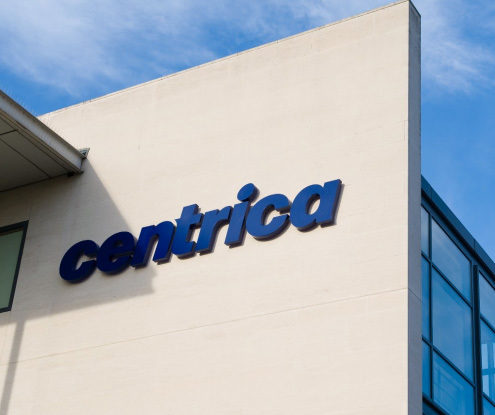
Centrica is headed for its worst year as investor skepticism over the utility’s strategy and the political turmoil plaguing U.K. energy suppliers shows no sign of ending.
Concerns that Britain’s biggest home energy supplier may have to cut its dividend contributed to a 32 percent share-price drop, the biggest decliner of its European peers. That’s on top of Prime Minister Theresa May’s plan to cap household bills, which sent Centrica’s stock down the most in more than a year when it was announced last month.
The Windsor, England-based utility will give investors a trading update on Thursday as it seeks to head off government intervention on household charging and tries to prevent a customer exodus to the spread of new suppliers in the market. In August, Centrica raised power prices for the first time in four years after reporting an 11 percent drop in first-half earnings.
“I don’t see any drivers for a share price recovery,” Elchin Mammadov, an analyst at Bloomberg Intelligence said. Centrica would “have to do something drastic or someone would need to put in a bid to take them over.”
The government move follows a probe by the Competition and Markets Authority that found customers overpay on their energy bills by 1.4 billion pounds ($1.9 billion) a year. The new law will include limits on Standard Variable Tariffs, the default rates consumers revert to once fixed-term contracts expire and that still cover two-thirds of the market.
The regulatory uncertainty helped push Centrica to the lowest levels since 2003. The energy provider is the worst performer in the 29-member Stoxx 600 Utilities Index, which has gained 7.8 percent this year.
‘Not Happy’
“Clearly I’m not happy with where it is,” Iain Conn, chief executive officer, said in a call with reporters on Monday, referring to the company’s share price. “Political uncertainty has been a significant overhang but we believe we have an attractive business in the U.K.”
Centrica unveiled on Monday plans to scrap default tariffs for new customers by the end of March as part of proposals to reform the U.K. energy market. A voluntary phaseout is better than a government cap, Conn said.
Centrica’s future growth involves its Connected Homes business, where consumers can control energy use from their mobile phones. This was a key part of the company’s strategy announced in July 2015, six months after Conn became CEO.
“Share price performance suggests little enthusiasm around the new strategy among investors,” said Ahmed Farman, an analyst at Jefferies International Ltd. For the Connected Homes operation, “profitability is a few years out at a time when the core business is under regulatory pressure.”
The energy supplier is targeting revenue of 1 billion pounds for its Connected Home and distributed energy businesses by 2022. The units’ combined sales climbed 72 percent last year to 184 million pounds.
The margin on earnings before interest and tax for energy supply was 6.2 percent last year, up from 5.7 percent in 2015, according to company filings. The utility cut its full-year dividend in 2015 after weak oil and gas prices led to a surprise loss.
“The share price is in effect already pricing in a dividend cut” which will happen if profit margins in energy supply can’t be sustained at 5 to 7 percent, said John Musk, an analyst at RBC Europe Ltd.
Centrica reports full-year results in February.
Recommended for you
